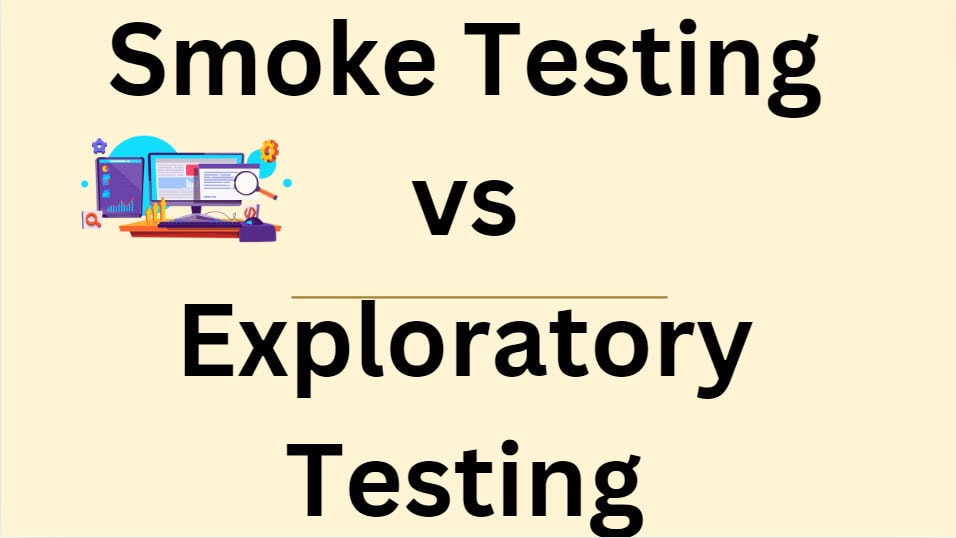Smoke testing and exploratory testing are two different approaches to software testing, each with its own purpose and methodology
Smoke Testing
Smoke testing is a preliminary type of testing that aims to quickly determine if a new software build is stable enough for further testing. Its main purpose is to verify the basic functionality of an application and identify major issues early in the development process. Smoke tests are typically:
- Quick to execute
- Cover core functionality
- Performed on every new build
- Used to determine if a build is testable
- Smoke testing is often conducted before more comprehensive testing phases to save time and resources by catching critical issues early.
Exploratory Testing
Exploratory testing is a more dynamic and flexible approach to testing. It is described as simultaneous learning, test design, and test execution. In exploratory testing:
- Testers explore the application without predefined test cases
- Tests are designed and executed on the fly
- Testers use their creativity and intuition to find defects
- The focus is on discovering unexpected issues and usability problems
While smoke testing follows a more structured approach to verifying basic functionality, exploratory testing allows for a more creative and adaptable testing process. It can uncover issues that more scripted testing methods might miss.
Here’s a tabular comparison of Smoke Testing vs Exploratory Testing:
| Aspect | Smoke Testing | Exploratory Testing |
|---|---|---|
| Definition | A quick test to verify the basic functionality and stability of a new build | An unscripted approach where testers design and execute tests simultaneously |
| Purpose | To determine if a build is stable enough for further testing | To discover unexpected issues and explore application behavior |
| Scope | Limited, focuses on core functionality | Broad, can cover any aspect of the application |
| Test Cases | Predefined, usually automated | Created on the fly, based on the tester’s intuition |
| Timing | Performed on every new build early in the testing cycle | It can be performed at any stage of development |
| Duration | Quick, typically minutes to a few hours | Varies, can be ongoing throughout development |
| Structure | Highly structured and planned | Flexible and adaptable |
| Skill Level | It can be performed by any tester | Requires experienced testers with good domain knowledge |
| Coverage | Shallow but wide, covering critical paths | Deep but narrow, focusing on specific areas of interest |
| Documentation | Well-documented, repeatable tests | Less formal, often documented during or after testing |
| Objective | To determine if the deployed build is stable | To find defects, usability issues, and explore edge cases |
You may also like following the articles below
In practice, both types of testing are valuable and often used at different stages of the software development lifecycle. Smoke testing ensures basic stability, while exploratory testing can provide deeper insights into the user experience and uncover hidden defects.

My name is Madhu, and I’m a certified Test Consultant with more than 16 years of hands-on experience developing and maintaining manual and Test Automation in the Software industry. I have experience with automation tools such as Selenium, Katalon Studio, etc.
